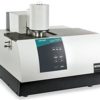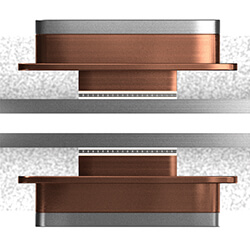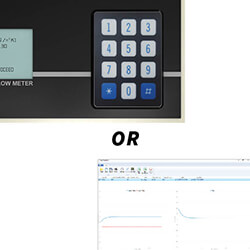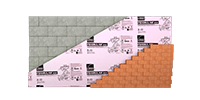
The HFM-100 Heat Flow Meter method is an easy-to-use rapid technique for thermal conductivity measurement and thermal resistance measurement of insulation products, construction materials, packaging, and assemblies. A measurement of thermal conductivity is an indicator of the ability of a material to conduct heat and can be critical for defining energy efficiency and thermal performance in materials. The Thermtest HFM has been designed and engineered to combine the highest accuracy, repeatability, widest temperature range, and industry-leading performance, all at an exceptional value. Follows international standards: ASTM C518, ISO 8301, and EN 12667.
GET MY PRICING INFORMATION
CAPABILITIES
While adhering to multiple international standards, the Thermtest Heat Flow Meter Method is highly capable at a low price.
HIGHLIGHTS
Read about the Heat Flow Meter’s highlights. Click on an icon to jump to a section. Click the up arrow to return.
SAMPLE MEASUREMENT
Simple as 1, 2, 3. Click here for a step-by-step guide on how to setup and get a measurement with a Heat Flow Meter.
APPLICATION
Go more in-depth and explore applications investigating the thermal properties aerogels or animal friendly faux-fur.
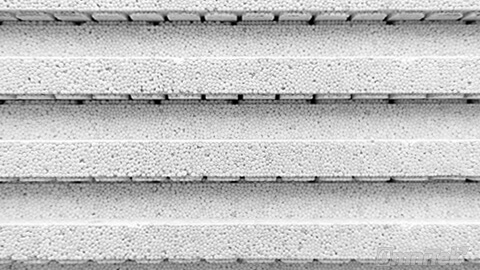



FEATURED HEAT FLOW METER METHOD CAPABILITIES
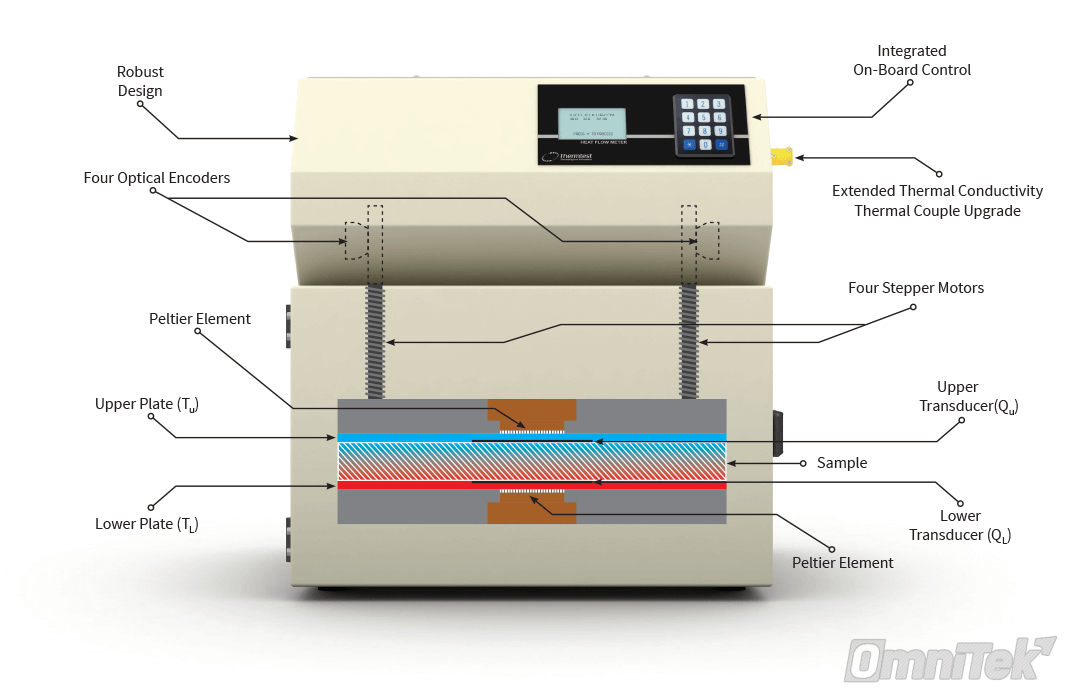
- Two flux sensors for accurate measurement of thermal conductivity
- Peltier heating / cooling plates for rapid control of temperature
- Thickness is measured to an accuracy of 0.1 mm (0.004 in) with the use of four digital optical encoders
- Front panel operation allows full control of all HFM functions, or use the intuitive HFM Software for basic and additional functions, such as printing and exporting
- Plate clamping can be automated or set to a user defined thickness — ideal for compressible materials
- Follows international standards: ASTM C518, ISO 8301, and EN 12667
The cost effective HFM 100 Heat Flow Meter instrument is an excellent choice when making steady-state thermal conductivity measurements of specimens such as insulation products and construction materials. Thermtest has rigorously engineered the heat flow meter to meet the requirements of international standards including ASTM C518, ISO 8301, and EN 12667.
Operating the HFM is straightforward — a sample is positioned between two heating – cooling plates, and the upper plate, powered by stepper motors positioned in each corner, lowers to contact the top of the sample. Plate contact with the test specimen is controlled by a standard pressure applied, or by a user defined specimen thickness. Stepper motors are controlled by individual optical encoders for measurement of sample thickness (L), to the nearest 0.1 mm (0.004 in). Integrated logic between stepper motors allows the upper plate to sense and adjust for specimens with surface variations, optimizing plate – specimen contact for measurements.
One heat flux sensor is integrated into each plate, and is used to monitor heat flux (Q/A), generated due to the difference in temperature (ΔT) between the top and bottom plate at regular intervals, until steady-state heat flux is observed. The composite heat flux is then used to calculate thermal conductivity (λ) and thermal resistance (R) according to Fourier’s Law.

HFM 100 SPECIFICATIONS
Following international standards, the HFM 100 Heat Flow Meter Method is designed for testing both homogeneous and heterogeneous materials.
The HFM 100 sample size allows for representative testing of materials typically found in insulation and construction industries.
| Materials | Insulation, Solids, and Textiles |
| Type of Sensors | Flux Sensors (x 2) |
| Applications | General Testing |
| Direction | Through-Thickness |
| Typical Thermal Conductivity | 0.005 to 0.5 W/mK (0.035 to 3.5 BTU/(hr·ft·°F)) |
| Extended TC Thermal Couple Upgrade | Up to 2.5 W/mK (17.3 BTU/(hr·ft·°F)) |
| Measurement Time | 30 to 60 min |
| Reproducibility | Typically better than 1% |
| Accuracy | Typically better than 3% |
| Plate Temperature Range* | -20 to 70°C (-4 to 158˚F) |
| Largest Sample Size | 300 x 300 x 100 mm (12 x 12 x 4 in) |
| Standard | ASTM C518, ISO 8301, and EN 12667 |
Method is continually improved; specifications are subject to change without prior notice.
*Requires chilled circulator.
ACCURACY & REPEATABILITY OF THE HEAT FLOW METER METHOD
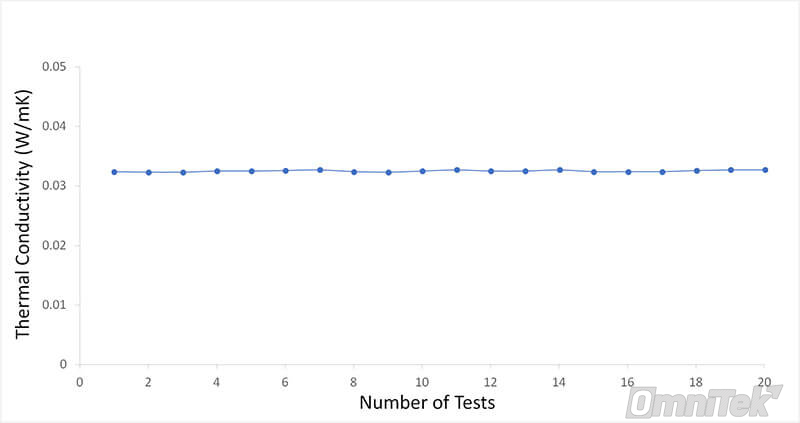
A sample of NIST SRM 1450d was repeatedly tested to confirm the accuracy and repeatability of the heat flow meter method. Prior to each of 20 measurements, the NIST 1450d sample was removed, and then placed back within the HFM-100 chamber. The certified thermal conductivity for the NIST piece at 20˚C (68˚F) is 0.03239 W/mK (0.2246 BTU/(hr·ft·°F)). The average thermal conductivity value received from all 20 tests was 0.0325 W/mK (0.2253 BTU/(hr·ft·°F)). All tests had a repeatability within 0.5%, and an accuracy within 1% of the certified value.
HIGH THERMAL CONDUCTIVITY KIT
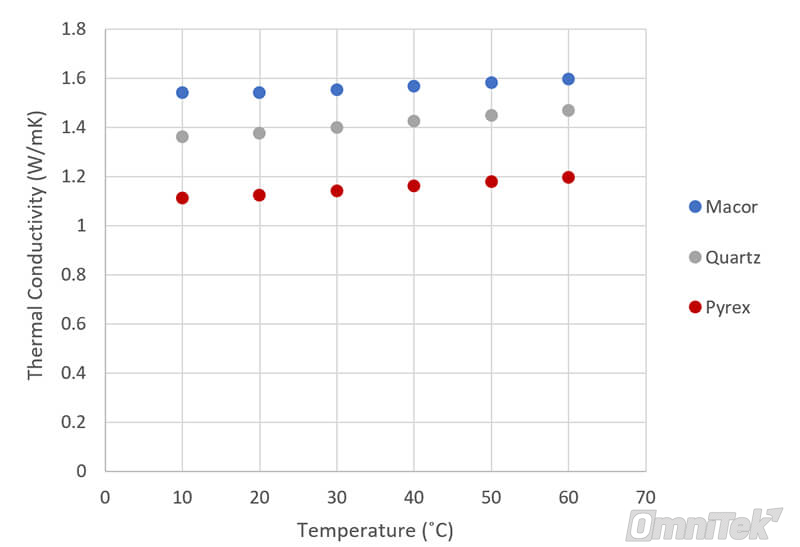
With the added High Thermal Conductivity Kit, the HFM-100 is able to accurately, and efficiently measure higher thermal conductivity materials, such as glass and ceramics. For such applications, an external thermocouple kit is used in combination with the sample being tested. Macor, Quartz, and Pyrex were tested in the HFM from 10˚C to 60˚C (50˚F to 140˚F). All measured values are within the stated accuracy of the system, +/- 5%.
HEAT FLOW METER METHOD HIGHLIGHTS
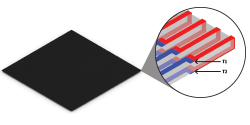
MEASUREMENT OF HEAT FLUX
A heat flux sensor is a thermopile sensor, consisting of thermocouple junctions arranged uniformly across the sensor surface. Each individual junction generates an electrical voltage, proportional to the difference in temperature across the hot and cold junctions of the thermocouple. For accurate measurements of heat flux, one sensor is integrated into the surface of each testing plate of the heat flow meter method. This intimate contact reduces the level of calibration required, resulting in improved test results. ▲
TEMPERATURE CONTROL
Thermoelectric Peltier elements are used to heat and cool the HFM testing plates. A thermoelectric element is a solid-state active heat pump which transfers heat from one side of the device to the other, with consumption of electrical energy, depending on the direction of the current. This flexibility allows the user to easily change heating and cooling direction, to best match their testing application, at a temperature resolution of < 0.1°C (0.18°F). Each thermoelectric module is matched with a thermocouple and smart temperature control to optimize the speed and accuracy of the plate temperatures. ▲
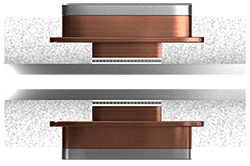

THICKNESS MEASUREMENT
Accurate sample thickness is optimal for determining thermal resistance of a material with the measurement of thermal conductivity. The HFM 100 system features the advantage of either an automatic determination of sample thickness, for rigid materials, or a user defined sample thickness, for compressible materials. Sample thickness is measured using digital optical encoder technology. Four encoders are positioned at each corner of the top sample plate. Multi-position encoder placement ensures the most accurate (< 0.1 mm / 0.004 in) measurement of sample thickness, and in the end, thermal resistance for materials being measured. ▲
VERSATILE OPERATION
The HFM 100 offers users two versatile and convenient methods of operation – run your measurements independently using the integrated front control panel, or by using the intuitive Windows based HFM software included with each system. The simple to use software offers additional features over the front panel operation, including unlimited steps of temperature automation when testing, and additional functions like saving, exporting, and printing measurement results. With front panel control, users can automate up to five steps of temperature when making measurements, or unlimited steps with the HFM software. HFM results are conveniently available in both SI and Imperial Units of measure. ▲
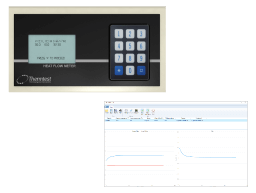
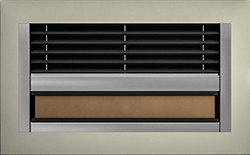
CLAMPING CONTROL
For rigid materials, plates automatically clamp together for optimum contact between sample and heat flux sensors. For compressible materials, the desired height of the sample may be entered manually and the plate will automatically stop at the entered sample height. ▲
REFERENCE MATERIALS
Every HFM 100 system comes complete with one Standard Reference Material (SRM) of your choosing, available from the National Institute of Standards and Technology (NIST). SRM 1450d – Fibrous Glass-Board is certified for thermal conductivity from 6.85 to 66.85˚C (44.33 to 152.33˚F) and is available in a thickness of 25 mm (1 in). SRM 1453 – Expanded Polystyrene Board is certified for thermal conductivity from 7.85 to 39.85˚C (46.13 to 103.73˚F), and is available in a thickness of 12.5 mm (0.5 in). In addition to NIST Standard Reference Materials, Thermal Transfer Standards (TS) can be developed by Thermtest, for specialized testing applications. ▲

SAMPLE MEASUREMENT

1
THE SAMPLE
The sample should be between 150 mm and 300 mm square (6 in to 12 in square), and have parallel surfaces. Sample height is automatically measured by the HFM 100; however for compressible materials, desired sample thickness can be manually entered for predetermined testing thickness.
Approximate Time: 1 minute

2
INSERT SAMPLE
Place the sample between the HFM 100’s parallel testing plates. For smaller samples or samples of differing shapes from the testing chamber, place the sample within the center of the lower plate, positioned directly over the heat flux sensor.
Approximate Time: 1 minute
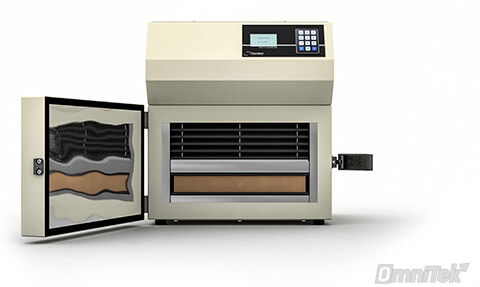
3
CLOSE PLATES
The top plate automatically lowers for rigid samples or to a predetermined thickness for compressible samples. For added accuracy when testing rigid samples, the top plate makes a short confirming movement for optimum contact and measurement of thickness. Additionally, this short movement will also compensate for any issue with sample flatness.
Approximate Time: 1 minute

4
RUN EXPERIMENT
A single mean temperature or steps of temperature may be selected for an automated testing routine. Testing can be performed in either quality control (20 to 30 min) or high accuracy (30 to 60 min) modes for test times which best fit your application. Once testing is complete, results can be saved, printed, or exported to Microsoft Excel for further processing.
Approximate Time: 20-60 minutes
APPLICATIONS USING THE HEAT FLOW METER
The Heat Flow Meter method (HFM), designed by Thermtest, provides users with the ability to measure thermal properties of larger, flat slab specimens ranging in thermal conductivities from 0.005 to 0.5 W/m∙K. This instrument is capable of measuring the steady-state heat transfer properties of foams solids and textiles.
AEROGEL
Investigating the thermal properties of aerogel blankets – the lowest thermally conductive material known to all solids.
FUR
Determining the thermal conductivity of animal fur for its comparison to an animal friendly faux-fur.
INSULATION VS. THICKNESS
Does thickness have an effect on the insulative capabilities of extruded polystyrene
WOOD
A look into the thermal conductivity of softwood, for use in construction.

